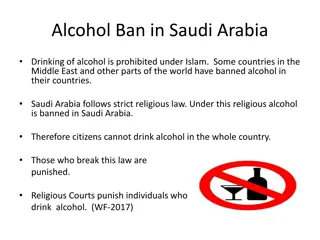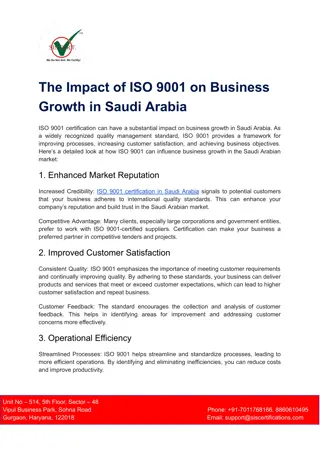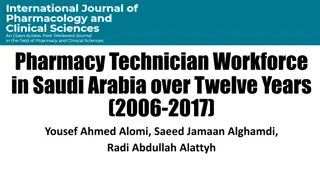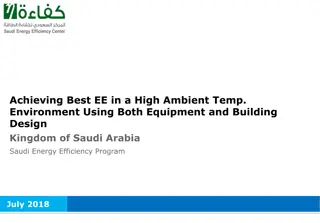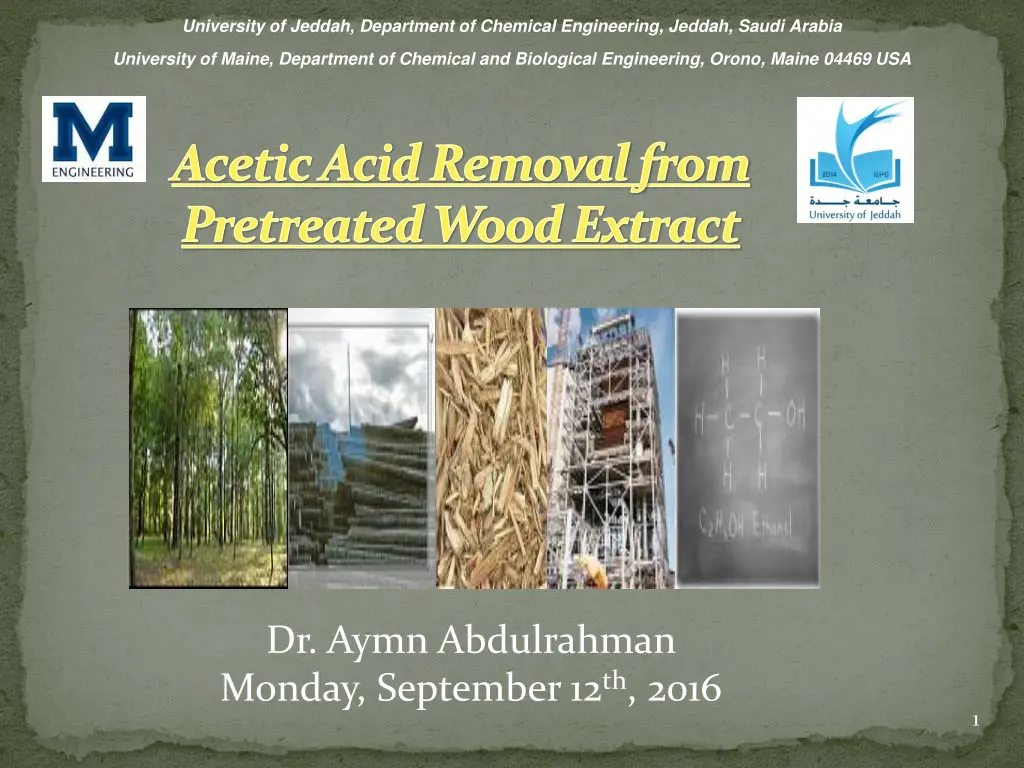
Acetic Acid Removal from Wood Extract in Chemical Engineering Study
Explore the process of removing acetic acid from pretreated wood extract in a research study conducted at the University of Jeddah and University of Maine. Learn about the motivation, objectives, materials, methods, results, and future work involved in this endeavor within the field of chemical engineering.
Download Presentation

Please find below an Image/Link to download the presentation.
The content on the website is provided AS IS for your information and personal use only. It may not be sold, licensed, or shared on other websites without obtaining consent from the author. If you encounter any issues during the download, it is possible that the publisher has removed the file from their server.
You are allowed to download the files provided on this website for personal or commercial use, subject to the condition that they are used lawfully. All files are the property of their respective owners.
The content on the website is provided AS IS for your information and personal use only. It may not be sold, licensed, or shared on other websites without obtaining consent from the author.
E N D
Presentation Transcript
University of Jeddah, Department of Chemical Engineering, Jeddah, Saudi Arabia University of Maine, Department of Chemical and Biological Engineering, Orono, Maine 04469 USA Acetic Acid Removal from Pretreated Wood Extract Dr. Aymn Abdulrahman Monday, September 12th, 2016 1
Outline Introduction Motivation Objectives Material and Method Procedure Results and Conclusion Future Work Acknowledgment Acetic Acid Removal from Pretreated Wood Extract 2
INTEGRATED FOREST BIOREFINERY Maine is a Forest state ( covers 90 % of the state) STRATEGIC GOAL: Evolve existing pulp mills into forest biorefineries. Pulp, paper, and wood products Renewable energy Chemical products
The University of Maine FBRI Logo Deriving optimal value from wood components Hemicellulose: low strength low energy density Most soluble Fermentation feedstock? Lignin: highest energy density Cellulose: strong fibers Engineering Logo Van Walsum Research U. Maine 2012
Van Heiningen Process: From Lab to Mill Floor Success of DOE FC36-04GO14306 (2004-08) Forest Products Industry of the Future ,Drew Ronneberg, DOE Headquarters
Overall Pulp and Biorefinery Wood Chips Green Liquor Kraft pulping process Pulp and paper Hot Water HAc Wood chips Extractor Distillation Sugar water Solvent+ HAc Concentration Sulfuric Acid Acid Hydrolysis Solvent HAc Removal Lignin Removal Fermentation Ethanol 6
Motivation Acetic acid is a valuable product Acetic acid can inhibit ethanol fermentation Acetic acid presents in extract: GL extract : 8-9 g/L HW extract :1-3 g/L Acetic acid structure Acetic Acid Removal from Pretreated Wood Extract 7
Lignocellulose Extraction 7 acetyl groups per every 10 xyloses 8 USDA Agricultural Research Service http://www.biomassmagazine.com/article-print.jsp?article_id=1533
Alkaline Hydrolysis Saponification Apply under alkaline condition 2- - O O O + - R + - H O R R O H3 C O O - H3 C H3 C OH OH Ref. (Sjostrom, 1993) 9 Acetic Acid Removal from Pretreated Wood Extract
Hemicellulose Extract Extraction : Using a 60 L rotating digester 7 kg ( dry weight) of fresh chips (16mm 22.6mm 3mm) Mixing with green liquor (1.4 % of Na2O) Ratio of Liquid : Wood chip=4:1 Rotating speed (2 rpm) at 160 C for 110 minutes Collecting the free-draining extract Secondary Hydrolysis of Extract: with 4 % (w/v) H2SO4 for 60 min at 121 C 10 Acetic Acid Removal from Pretreated Wood Extract
Composition of 3 % Na2O Green Liquor (GL) Extracted Northern Hardwood GL Extract2 [g/L] GL Extract3 [g/L] Composition of Extract Glucose 0.09 0.36 XMG1 0.11 1.62 Arabinose 0.02 0.24 Acetic Acid 8.32 9.40 Total Sugars 0.22 2.22 a 1 xylose, mannose, and galactose, 3 secondary hydrolyzed with 72 % sulfuric acid, 2 analyzed without secondary hydrolysis. ( By Dr. Um) 11
Objectives Recovery of acetic acid from hemicellulose extract Optimization of Liquid-Liquid Extraction (pH, ratio of org: aq. ) Recycling of solvent by distillation Select between two solvents Determine the most efficient configuration of the extraction system Acetic Acid Removal from Pretreated Wood Extract 12
Methods Liquid-Liquid Extraction Clean System (Acetic acid in DI-water) (10 g/L) Hemicellulose Extract (GL extract) Separations Centrifuge Distillation 13
Extraction Flow Diagram Volatile solvent Hemicellulose Extract Solvent HAc Centrifuge Liquid-Liquid Extraction Solvent Solvent + HAc Pure Acetic Acid Recovery Distillation Centrifuge Aqueous Phase Solvent Recycle Fermentation 14 Acetic Acid Removal from Pretreated Wood Extract
Materials Solvent Trioctylphosphine oxide (TOPO) ( [CH3(CH2)7]3PO mol wt. 386.64 ) Undecane ( C11H24, mol. wt. 156.3 ) Trioctylamine (TOA) ( [CH3(CH2)7]3N mol wt. 353.67 ) Octanol ( CH3(CH2)7OH mol wt. 130.23 ) Acetic Acid ( CH3COOH) Sulfuric acid ( H2SO4 ) Sodium Hydroxide ( 0.05 M NaOH ) ( using phenolphthalein as indicator ) 15
TOPO Trioctylphosphine oxide Strong solvating extractant Strong hydrogen bonding acceptors, induces the carboxylic acid to transfer to the extract phase CH3COOH + TOPO(org) CH3COOH(TOPO)org Molecular Formula: [CH3(CH2)7]3PO Molecular Wight : 386.64 Melting Point: 50-55 C Boiling Point: 201-202 C High boiling point Excellent chemical stability Low solubility in water Expensive component (dilute with undecane + recycle) 16
TOA Trioctyl amine Strong solvating extractant CH3COOH + TOA(org) CH3COOH(TOA)org High boiling point Low solubility in water Molecular Formula: [CH3(CH2)7]3N Molecular Wight : 353.67 Melting Point: -40 C Boiling Point: 365 367 C Less expensive component 17
Analysis Aqueous phase High Performance Liquid Chromatography (HPLC) (Bio- Rad Aminex HPX-87H Column) Organic phase Gas Chromatography (GC) with He as carrier gas and FID Titration with standardized 0.05 M NaOH solution pH meter Acetic Acid Removal from Pretreated Wood Extract 18
L-L Extraction Procedure For Small Scale Water Bath Load Sample: C11 +TOPO (10mL:10mL) Analysis vigorous shaking for 30 seconds 70 C Centrifuge (9000 rpm, 20 minutes) Residence time is 60 minutes 19
For 2 L Working Volume (1L org: 1L aqu) Load Sample: C11 +TOPO (1 L:1 L) Centrifuge Analysis For 60 min Mixing and heating at 70 C for 60 min 20
Two Phases Separation * Phase separation after TOPO-undecane extraction at 70 C and pH=1 21 * (Byung-Hwan Um, 2008)
Distillation Separate acetic acid from TOPO/C11 C11 returned to boiling flask HAC determined by GC and Titration 22
Results Comparing two solvents: Extraction conditions + efficiency Compatibility with green liquor Extract Recyclability Washing Solvent 23
Effect of varied concentrations of Extractant in organic solution TOA/Octanol pH=2.9 90 TOA 70 Extraction [%] TOPO/Undecane pH=1 50 30 10 0 40 80 120 160 200 240 280 320 360 400 440 480 520 560 600 Concentration of Extractant [g/L] Note: For Clean System Initial concentration of pure acetic acid solution= 10 g/L, at 70 C, Ratio [1:1] 24
Effect of varied ratios of organic to aqueous phase 100 TOA/Octanol 200 g/L pH=2.9 80 Extraction [%] 60 TOPO/Undecane 370 g/L pH=1 40 20 0 0.2 0.4 0.6 0.8 1 1.2 1.4 1.6 1.8 2 2.2 Ratio of Organic to Aqueous [v/v] Note: - This is for clean system - Initial concentration of pure acetic acid solution= 10 g/L , at 70 C 25
Effect of varied pH 100 TOA/Octanol 200 g/L 80 Extraction [%] 60 40 TOPO/Undecane 370 g/L 20 0 0 1 2 3 4 5 6 pH Note: - This is for clean system - Initial concentration of pure acetic acid solution= 10 g/L , at 70 C , Ratio [1:1] 26
Extraction % VS Extraction Temperature 100 Extraction % [w/w] 80 TOPO pH 1 60 TOPO pH 5 40 TOA pH 1 TOA pH 5 20 0 20 40 60 80 100 120 Extraction Temperature 0C Note: Extraction for Clean system, initial concentration of pure acetic acid solution= 10 g/L, 370 g/L for TOPO, 200 g/L for TOA, volume ratio of organic:aqueous phases[1:1] 27
Extraction % VS Recycle # 70 63 64 64 63 64 65 59 60 61 55 50 Clean System Extraction 45 Extraction % 39 40 Green Liqour Extraction 35 30 25 20 15 11 10 6 5 0 0 1 2 3 4 5 6 Recycle # Note: Initial aqueous acetic acid concentration is 10 g/L for clean system and 8.7 g/L for green liquor, 370 g/L TOPO/undecane, 70 C , 1:1 ratio and pH is 1 28
Organic Washing by Water VS NaOH 5 Washing by DI-water (0.04 % Lignin removal) 4.5 4.3 4.5 Washing by 1 M NaOH Solution (73 % Lignin removal) 4 Lignin Concentration [g/L] 3.5 3.3 3 2.5 2 1.2 1.5 1 0.5 0.2 0 Org before washing Org after washing Lignin Extracted 29
Organic Washing by NaOH Org. before extraction Org. after extraction Org. after washing by 1 M NaOH 30
Extraction % VS Recycle # 70 62 62 65 61 60 59 61 55 Extraction Before Hyrdolysis 50 Extraction [%] 45 40 39 Extraction After Hydrolysis & Washing 35 30 25 20 15 11 10 6 5 0 0 1 2 3 4 5 6 Recycle # Note: This is for green liquor extract system with 8.7 g/L initial acetic acid concentration, using 370 g/L of TOPO/Undecane, 1 pH, volume ratio organic:aqueous: 1 31
Solvent Recycling 70 64 64 64 63 63 60 62 62 61 50 50 41 Extraction % TOPO GL 40 37 33 TOPO CS 30 TOA GL 25 20 TOA CS 10 0 0 0 1 2 3 4 5 6 Recycle # Note: CS; clean system GL; green liquor extract system Initial aqueous acetic acid concentration is 10 g/L for clean system and 8.7 g/L for green liquor The extraction conditions were 1 pH, 1 ratio and at 70 C Using 370 g/L TOPO/undecane, 200 g/L TOA/Octanol 32
Comparison between TOPO & TOA TOPO Solvent concentration in organic pH 3 or lower TOA 200 g/L 370 g/L 2-4 1:1 1.5:1 Ratio 91% Clean system 64% 41% Green liquor 62% Easy at room temp. Less expensive Deteriorates Handling Cost Recyclability Hard at room temp. Expensive Stable 33
Conclusions Liquid-liquid extraction recovered acetic acid from two systems: Clean system ( acetic acid in D-water ) Hemicellulose extract ( green liquor extract ) Compared two solvents: TOPO in Undecane TOA in Octanol Best extraction conditions have been determined for TOPO and TOA extraction system (extractant concentration, Ratio. pH) TOPO shows better recyclability than TOA Acetic acid may be a viable co-product for a kraft pulp mill 34
Future Work TOA separation by distillation Analysis of organics in aqueous phase Scale up to pilot scale 35
Acknowledgment University of Jeddah Dr. G. Peter van Walsum Thesis Committee members (Dr. van Heiningen and Dr. Wheeler) Dr. Byung-Hwan Um & Audrey Polifka Dr. Martin Lawoko & Dr. Sara Walton 36








